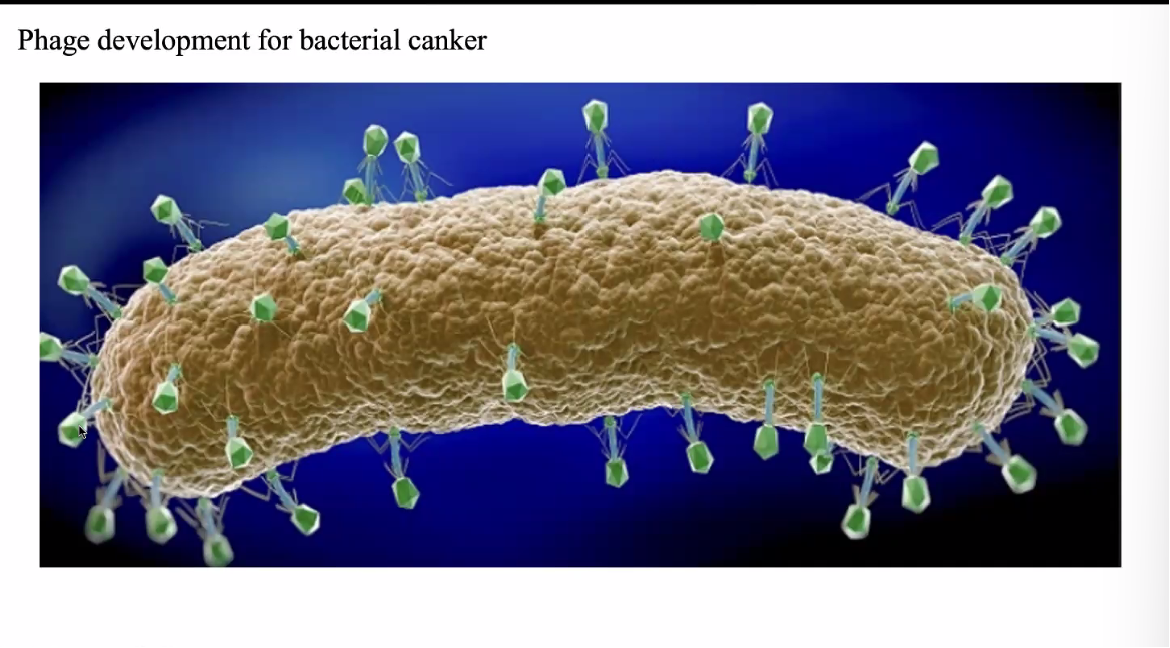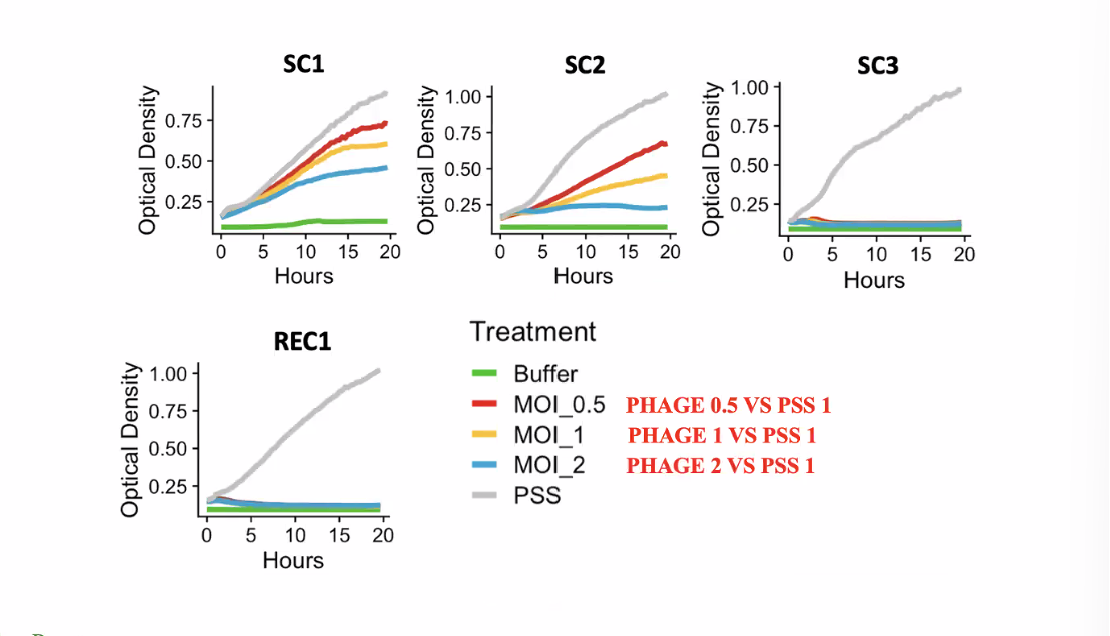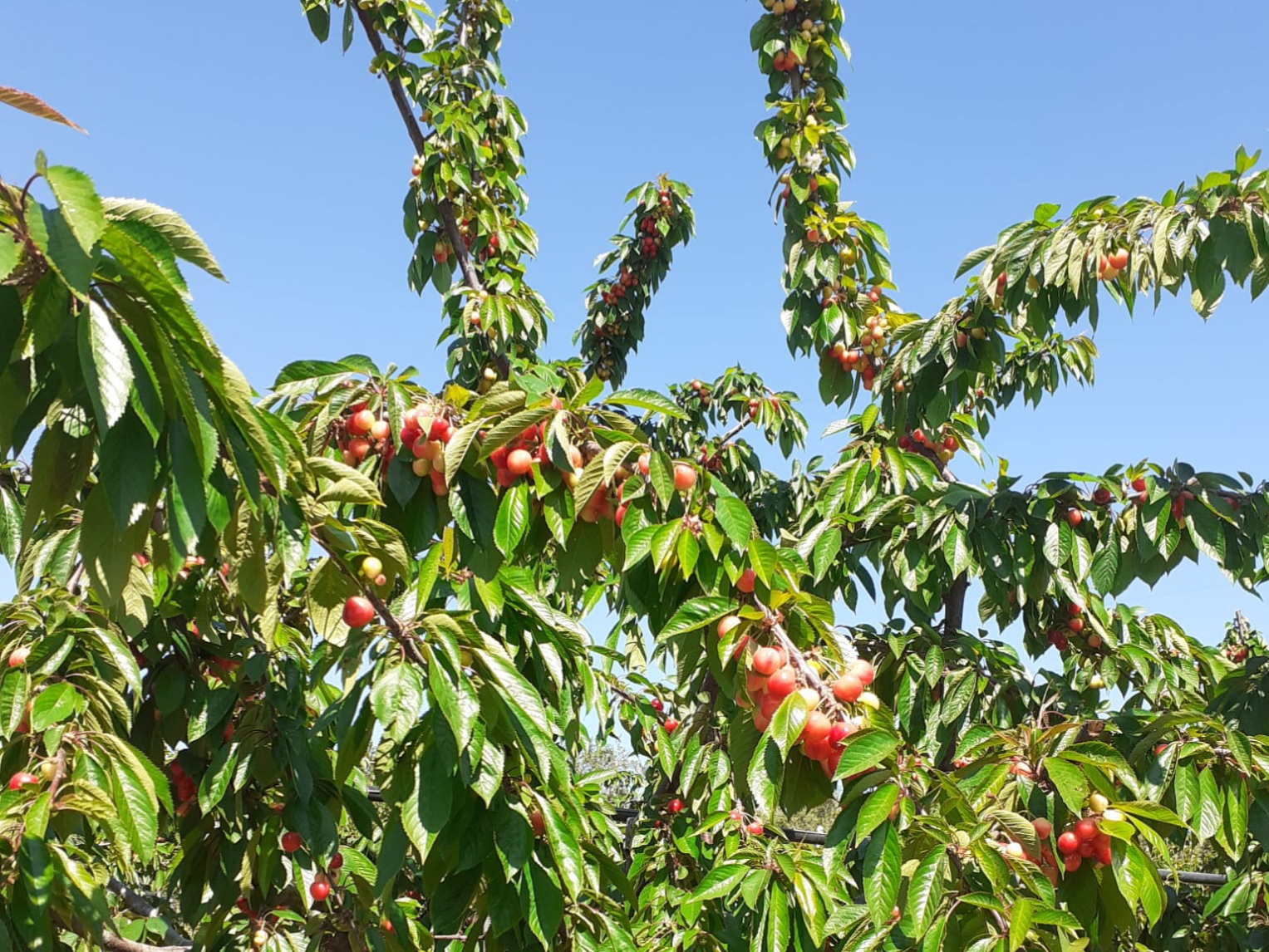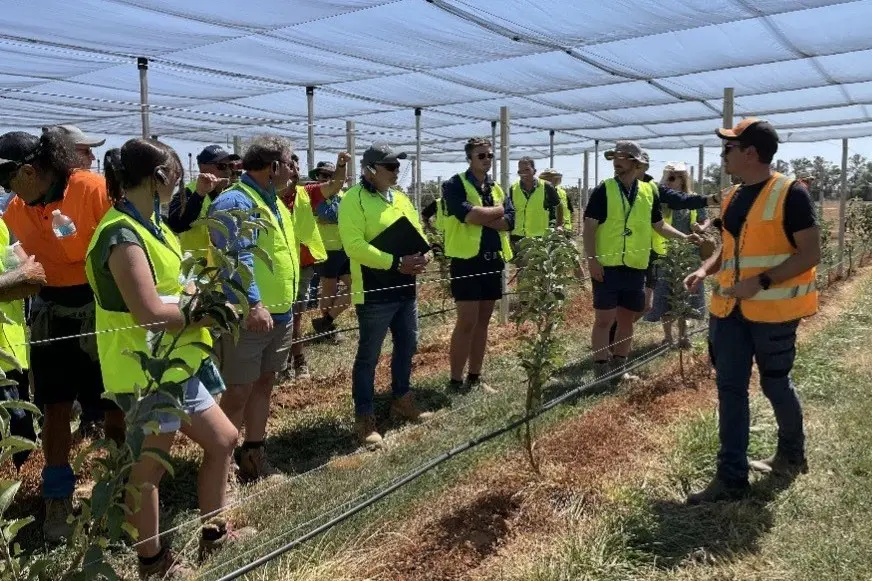Virus to fight bacterial cherry cancer: Michigan State University is leading the research.
Researchers from the University's Plant, Soil and Microbial Sciences Department have been investigating the possibility for some years now. Discussing the first results during a webinar entitled 'Stone fruit: rootstocks and disease management' and organised by Cornell University was MSU professor George Sundin : 'We are studying phage viruses as a possible biocontrol agent since other control options are limited.
To date, the best thing we can do if we become aware of the presence of Pseudomonas syringae pv syringae, a cancer-causing bacterium, is to prune and burn the branches,' he said at the end of his talk, which focused precisely on the possibility of deploying bacteriophage viruses, or simply 'phages', against bacterial cancer of the cherry tree.
Pseudomonas syringae pv syringae (PSS), a scary bacterium
Bacterial cancer of the sweet cherry tree is caused by Pseudomonas syringae pv syringae (PSS), a specific strain of the bacterium Pseudomonas syringae that attacks the sweet cherry tree. PSS has also recently become a threat in the States, in Michigan.
Although the state is mainly known for sour cherry cultivation, it is also important for the sweet cherry tree. Cherry growers well remember the years 1968, 2002, 2013 and 2021 for the damage caused precisely by bacterial cherry blight.
Bacterial cherry canker manifests itself by drying out the buds, with necrosis of the flowers, on the branches with cankers and on the leaves with black punctiform areas, as well as on the fruit, with black or brown lesions. A particularly delicate moment is the blossoming, especially if temperatures fall below a certain level (-3°C/ 0°C).
 Image 1: PSS damage on a sweet cherry orchard.
Image 1: PSS damage on a sweet cherry orchard.
The bacterium has in fact overwintered in the bark. With the return of cold weather, the infection causes more damage. Pseudomonas syringae pv syringae (PSS) is able to induce ice formation and cause frost damage. PSS is one of the bacteria active in ice nucleation (INA), synthesising a nucleating protein: 'If ice forms and spreads in tissue,' explained George Sundin , 'it kills that tissue. It could cause wounds that could allow the infection to invade.
This happens especially when we are in high humidity'. Particularly cold temperatures then can weaken the plant and predispose the woody tissue to infection.
Against PSS blunt weapons
Before recounting the research that MSU is conducting on phages, George Suddin quickly reviewed the defence options in the hands, to date, of Michigan's cherry farmers. The weapons seem to be particularly blunt, the best option remaining pruning and burning infected branches.
"Pruning is the best method of trying to reduce the inoculum in an orchard. If you don't prune, the bacteria will continue to spread within the tree until they kill it,' he says. Copper is known to have some efficacy; copper compounds registered for sweet cherry have been tested in the past by the research team. The time when coverage against PSS is needed is mainly during flowering.
The researchers applied the products just before flowering, during dormancy and pre-flowering, obtaining mixed results, especially during flowering, only to see the presence of PSS increase again. " Copper," said Sudddin, " gives no guarantee of being able to reduce the population of Pseudomonas syringae pv syringae all seasons.
There is also the fact that worrying PSS resistance to copper has been reported in Michigan . Since 2020, in Michigan, theantibiotic kasugamycin has been labelled for use on sweet cherry trees against bacterial cancer. Tests on Benton varieties with this product, however, have not yielded encouraging results. Distributed on the blossoms, it is able to kill up to 36/48 hours after application but should then be repeated.
 Image 2: Phages attacking PSS bacterium.
Image 2: Phages attacking PSS bacterium.
In fact, the term 'bacteriophage' means 'bacterial eater'. Phages have the advantage of being host-specific, almost always with a host range of only a few strains within a bacterial species. Phages therefore have no contraindications for plants, animals and humans.
"Different bacteria have different structures in their cell receptors, this limits what phages can attach to. This is important and of interest to us, because it means that they will not kill beneficial bacteria in orchards," explained George Sundin during his presentation.
The first results of phages against PSS
Then the professor said: "We isolated phages in Michigan and have been working on using them for three years. Initially, we tested their sensitivity to UV radiation. To protect them, we used kaolin in different quantities and found that it can be used as a protector'.
The MSU researchers first tried what Sundin called 'a phage cocktail' - phages of different types. Not getting the desired results, they started working with specific phages in the lab. The results showed that some phages were very effective in knocking down the population of Pseudomonas syringae pv syringae, others were much less so.
 Image 3: First results of phages against PSS.
Image 3: First results of phages against PSS.
"This type of study teaches us which phages work best , but we are also quantifying the amount of phage that emerges from a killed bacterial cell and the rate at which this happens. The aim is to try to select the best possible phage for biological control of PSS. We think they have good potential for flower control,' Prof. George Sundin concluded.
Barbara Righini
Images: George Sundin, professore Department of Plant, Soil and Microbial Sciences, MSU
Cherry Times - All rights reserved














